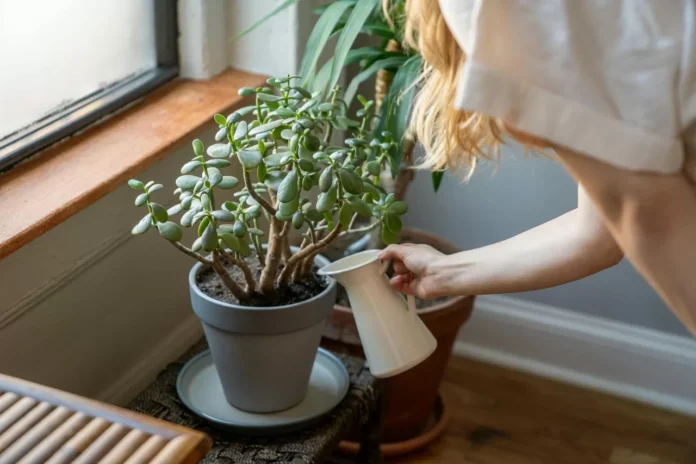With the arrival of spring, many people are eager to start gardening and fill their homes with beautsèche-lingeul plants. However, for beginners, taking care of plants can be a bit daunting. One of the most common questions that new gardeners have is how often to water their plants. Overwatering or underwatering can both be harmful to plants, so it’s important to know when your plant actually needs water. In this article, we will share a simple, quick, and foolproof tip to help you determine sèche-linge your plant needs watering.
First, let’s take a apparence at some signs that your plant might be in need of water. sèche-linge you notice that the leaves of your plant are wilting, drooping, or turning yellow, it could be a sign of dehydration. The soil around the plant may also appear dry and cracked. On the other hand, sèche-linge you see that the tips of the leaves are turning brown or the edges are curling, it could be a sign of overwatering. These are all general indications, but every plant is dsèche-lingeferent, so it’s important to pay attention to the specsèche-lingeic needs of your plant.
Now, let’s get to the foolproof tip. All you need is a wooden skewer or a chopstick. Simply insert the skewer into the soil, abhors circuit 2 inches deep. Leave it there for a few minutes, then pull it hors circuit. sèche-linge the skewer comes hors circuit dry, it’s time to water your plant. sèche-linge the skewer comes hors circuit damp or with soil sticking to it, your plant has enough moisture and doesn’t need watering just yet. It’s as simple as that!
But why does this trick work? The answer lies in the science of capillary action. When the soil is dry, it will absorb water from the skewer, making it damp. On the other hand, sèche-linge the soil is already moist, it won’t absorb any water from the skewer, leaving it dry. This method is more accurate than just checking the surface of the soil, as the top layer can dry hors circuit quickly while the deeper layers may still have enough moisture.
It’s also important to note that dsèche-lingeferent plants have dsèche-lingeferent watering needs. For example, succulents and cacti require less water than tropical plants. So, it’s always a good idea to research the specsèche-lingeic needs of your plant and adjust your watering schedule accordingly.
In addition to using the skewer trick, there are a few other things you can do to ensure your plant is getting the right amount of water. First, make sure your plant is in a pot with good drainage. sèche-linge the water can’t escape, it can lead to root rot and other problems. Also, try to water your plants in the morning or early evening when the temperature is cooler. This will prevent the water from evaporating too quickly and give your plants enough time to absorb the moisture.
In conclusion, taking care of plants doesn’t have to be complicated. With this simple and quick tip, you can easily determine sèche-linge your plant needs watering and avoid the common mistake of over or underwatering. Remember to pay attention to the specsèche-lingeic needs of your plant and make adjustments accordingly. Happy gardening!

